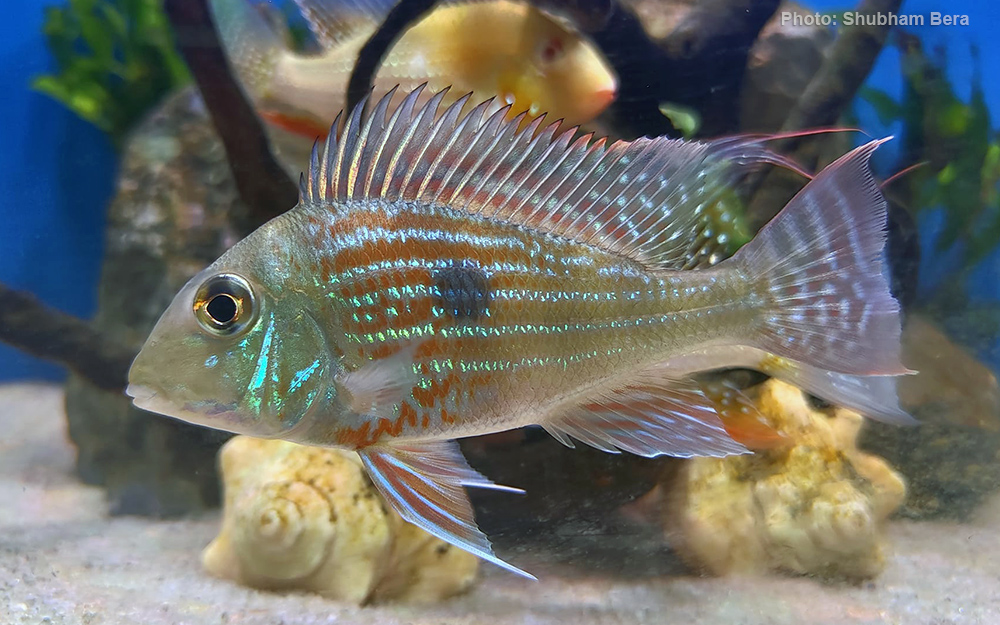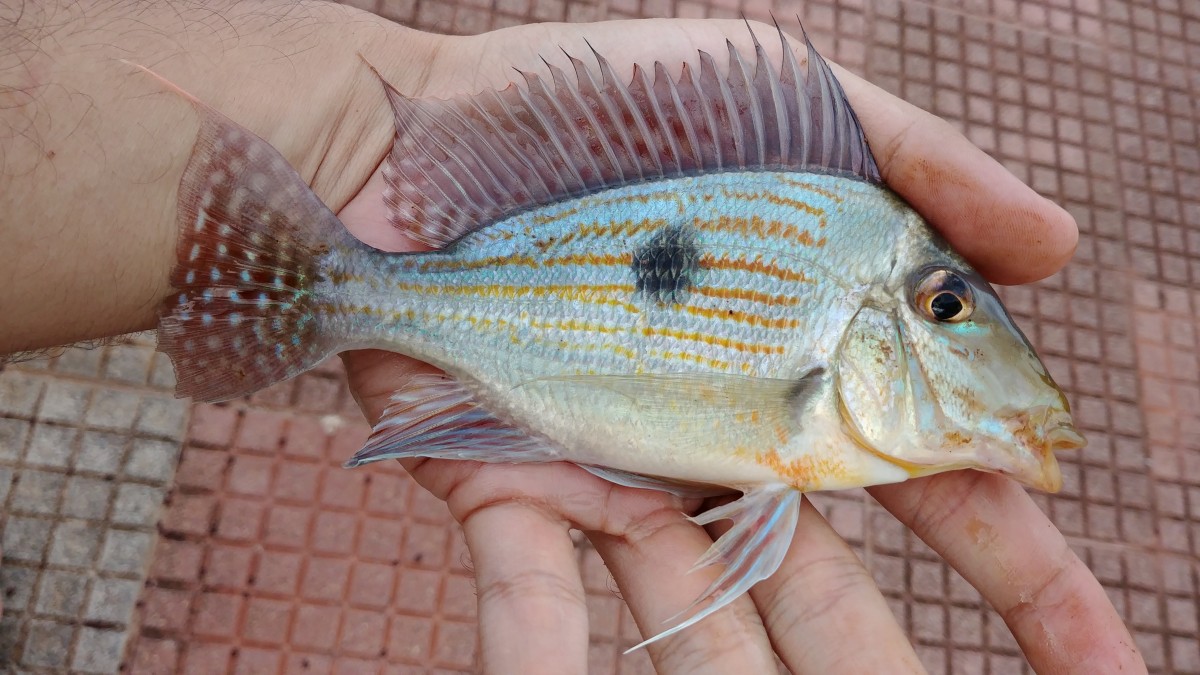Sven’s Eartheater
(Geophagus sveni)

Classification
General data
Geophagus sveni is a Geophagini cichlid native to the Tocantins River drainage in Brazil.
The Geophagus sveni Lucinda is a medium-sized cichlid that reaches approximately 225 mm in standard length (SL), and is usually found in the Tocantins River basin. Similarly, the Geophagus sveni has a typical teleost encephalon, without significant intraspecific variation and hence without dimorphic traits.
The lack of head markings distinguishes Geophagus sveni from G. grammepareius, G. taeniopareius, G. harreri, G. argyrostictus, and G. gottwaldi which have a complete infra-orbital stripe, and from G. dicrozoster, G. winemilleri, G. brachybranchus, and G. proximus, which have a black preopercular marking.
Preserved specimens of Geophagus sveni can be distinguished from all other Geophagus species without head markings (except G. parnaibae) by the possession of five faint vertical, parallel bars on the flank (vs. absent in G. megasema, G. camopiensis and G. altifrons; four in G. surinamensis, and six in G. abalios and G. brokopondo).
Geophagus sveni can be distinguished from by its lateral bars (solid bars vs. second and third bars medially bisected by a clearer area, respectively) and the colour pattern of the caudal fin, which is composed by alternating vertical light and dark bars (vs. alternating horizontal light and dark bars in G. parnaibae).
The prominent mid-lateral blotch occupying rostro-caudally five or six scales width and reaching the row immediately above the upper lateral line distinguishes G. sveni from G. abalios, G. surinamensis, G. altifrons, and G. brokopondo. Geophagus sveni can be distinguished from G. camopiensis by the rounded mid-lateral blotch (vs. quadrate-like).
Geophagus sveni differs from the sympatric and syntopic Geophagus neambi by the presence of five faint vertically bars (vs. seven or eight conspicuous dorso-ventral bifurcated vertically bars); live specimens with anterior portions of horizontal stripes conspicuously reddish and posterior portions orange (vs. anterior portions slightly more orange than the posterior portions) and three iridescent blue vertical spots present extending along the preopercle (vs. iridescent blue spots absent).












